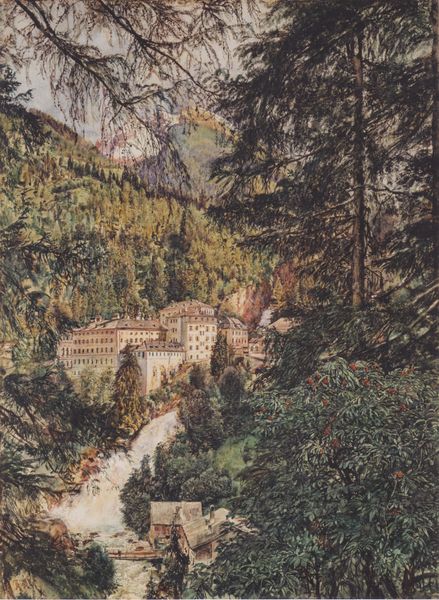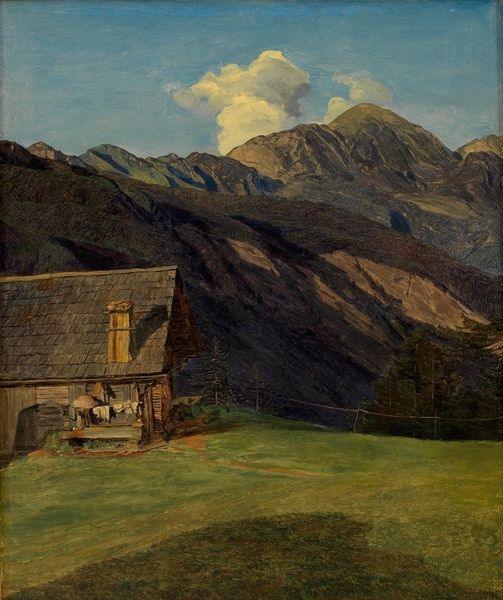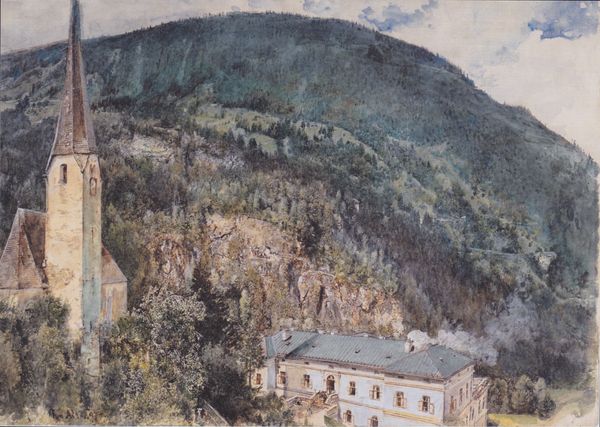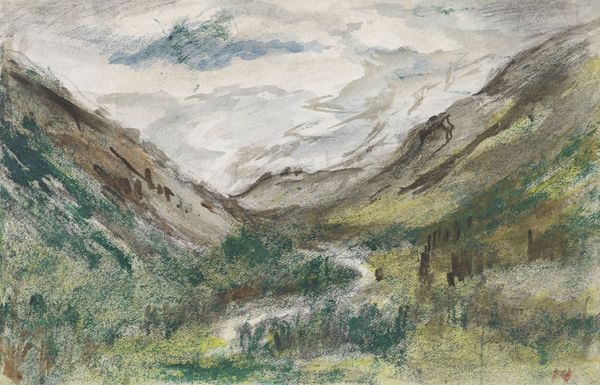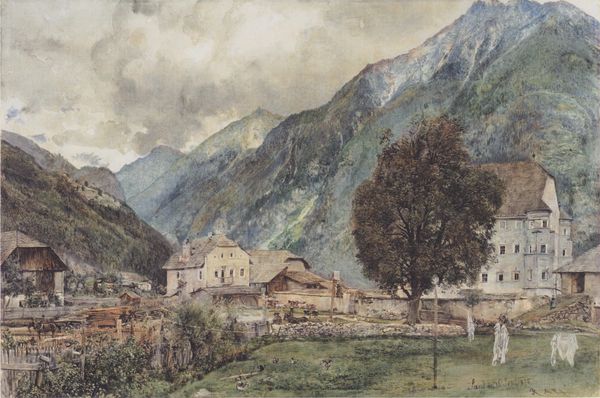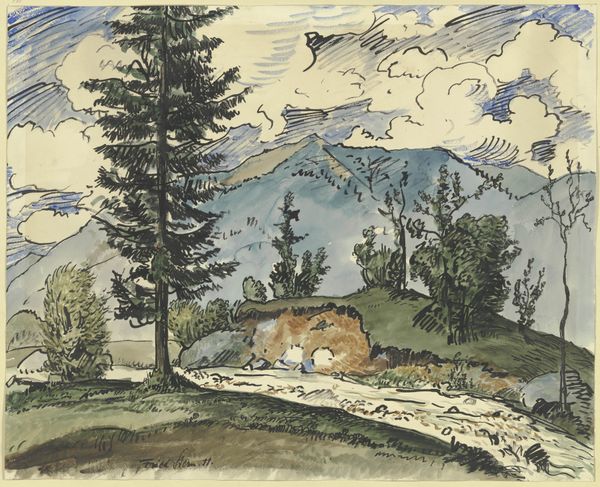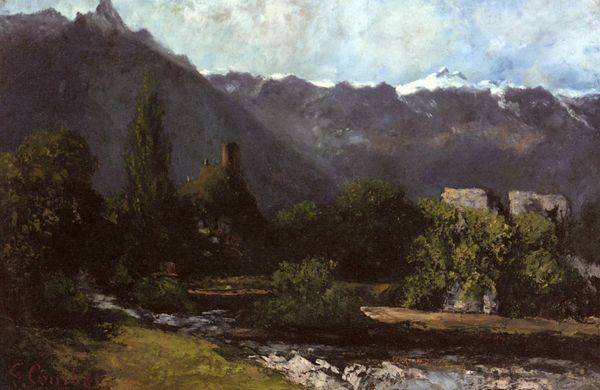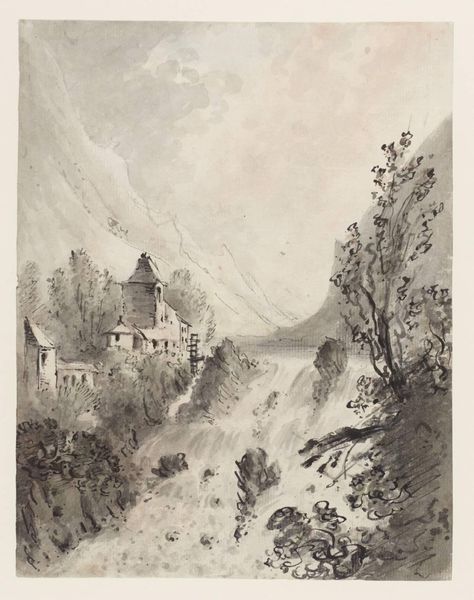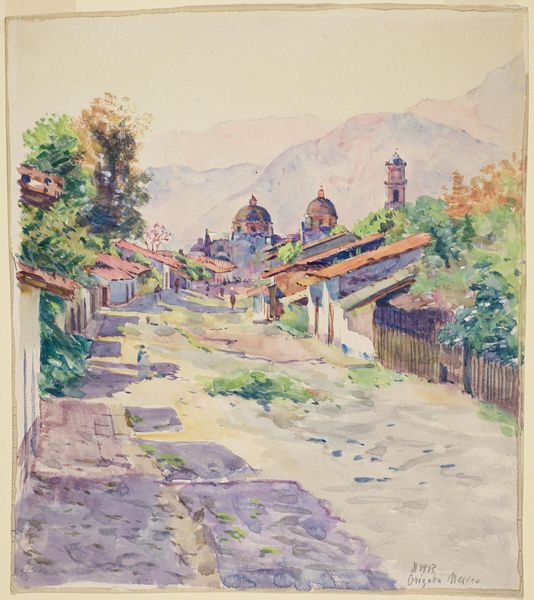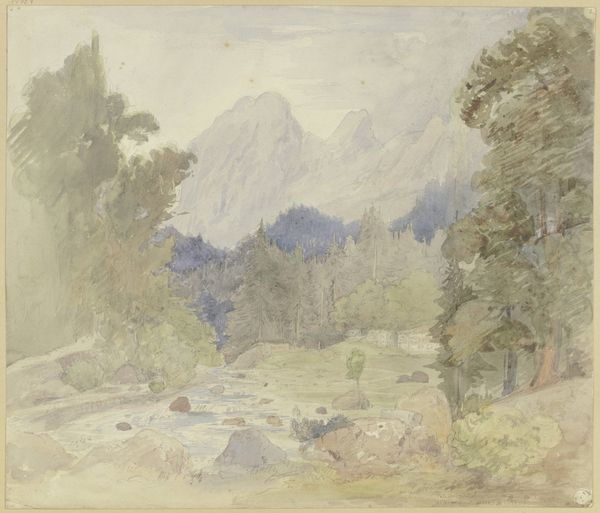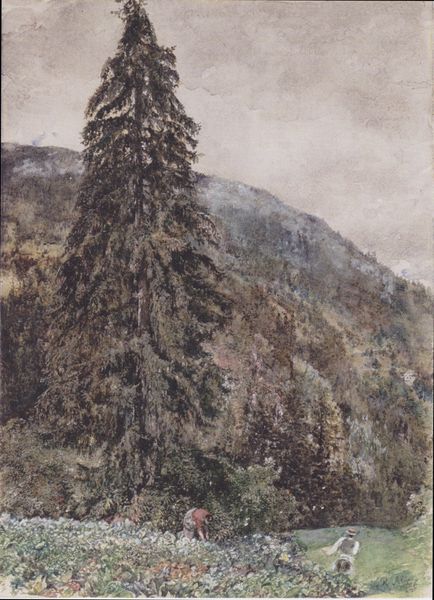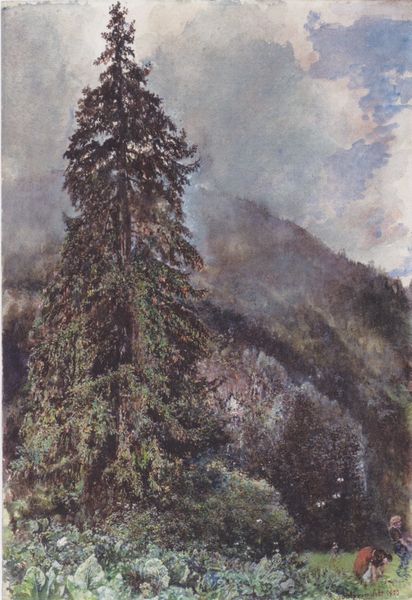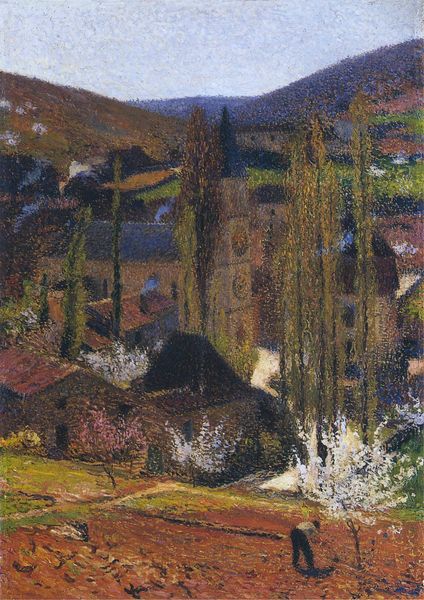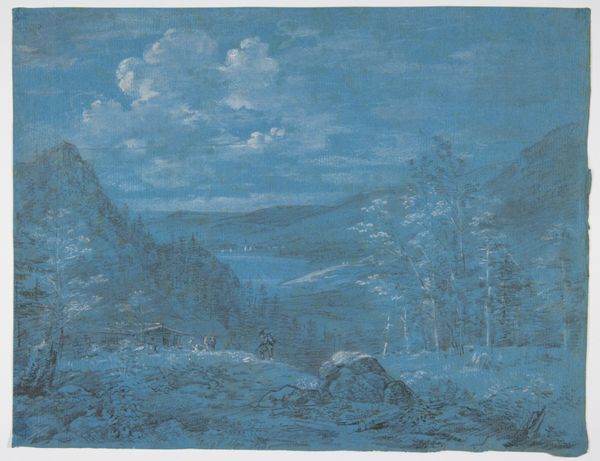
Dimensions: 38.1 x 37.1 cm
Copyright: Public domain
Curator: Rudolf von Alt's watercolor, "The Cemetery in Gastein," created in 1898, presents a fascinating study in contrasts. Editor: It's evocative, somber. The soft washes of color lend a certain ethereal quality, belying the gravitas inherent in its subject matter. Curator: Precisely. Note how the composition leads the eye: from the elaborate, aged grave markers in the foreground, through the dense treeline, and upwards to the imposing mountains looming over the valley. The atmospheric perspective is beautifully rendered. Editor: Yet, despite the picturesque landscape, there's a prevailing sense of confinement. Cemeteries often functioned as intensely segregated social spaces. The deceased, forever rooted to their geographical identities within strict religious, ethnic and gendered confines. Curator: A pertinent reading. From a purely formal viewpoint, however, the painting exhibits von Alt's mastery of the watercolor medium. He achieves remarkable detail and texture, particularly in the foliage and the subtle gradations of light on the mountain slopes. The artist's ability to depict reality with such fidelity makes the space visually interesting. Editor: It speaks to issues far beyond representation. These physical, visual hierarchies mirror a profound stratification within 19th-century Austrian society, reflected here even in death. Curator: An unavoidable social truth, perhaps, but the visual balance the artist constructs within the pictorial frame must also be recognized. Consider the subtle tension between the verticality of the trees and the horizontal sweep of the clouds, anchoring the work and reinforcing a visual stability, which reflects the traditions embedded in realism. Editor: Traditions often come hand-in-hand with inherited inequities, wouldn't you agree? Ultimately, what does it tell us when we look at death through a painterly, picturesque lens? Does it truly offer peace or merely mask the unsettling truths of finitude and social inequality? Curator: A compelling question, indeed. Art invites multiple perspectives. Thank you for highlighting these layered complexities of life, death, and the socio-political context in late 19th-century Austria. Editor: Thank you. Perhaps these competing tensions can make us reconsider not just the composition before us, but how we, too, participate in perpetuating or subverting structural disparities.
Comments
No comments
Be the first to comment and join the conversation on the ultimate creative platform.
